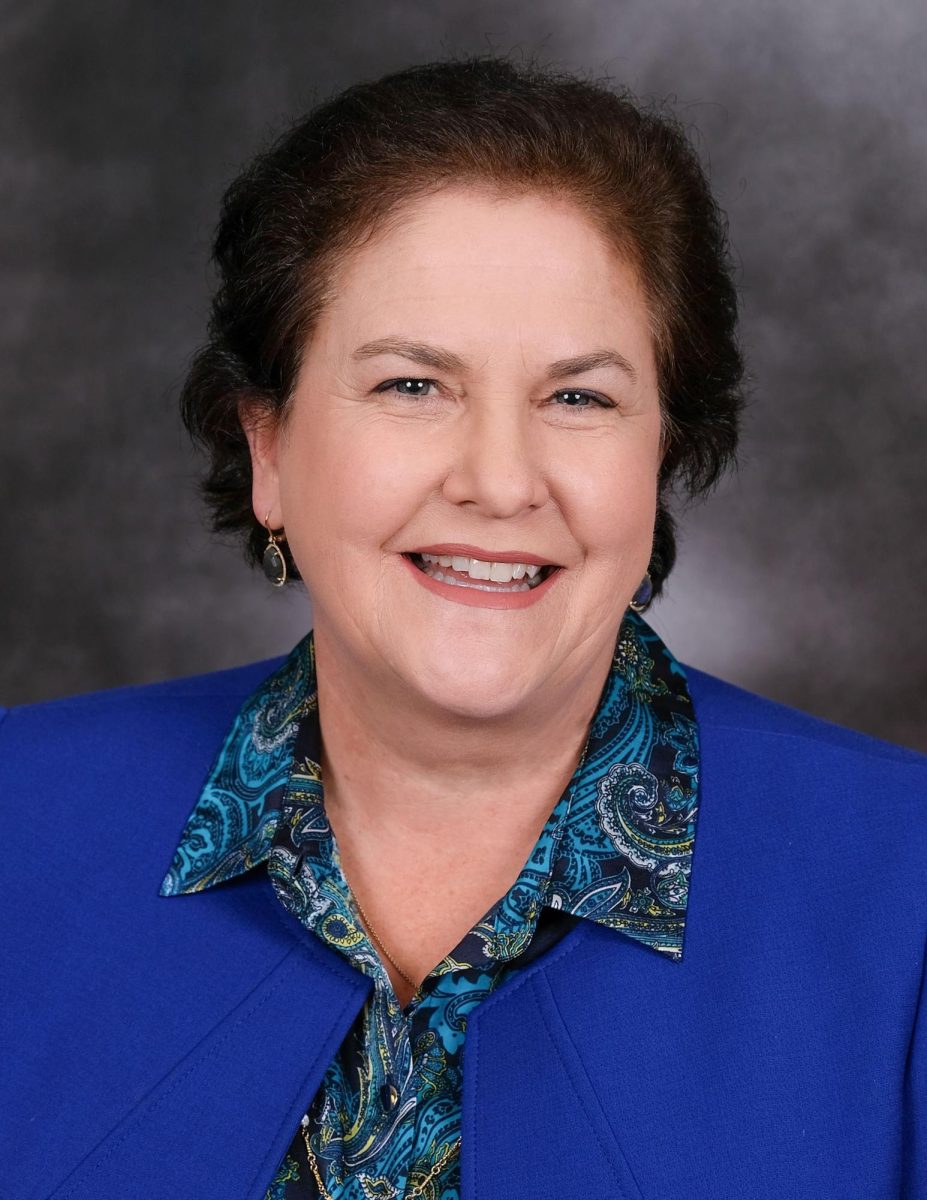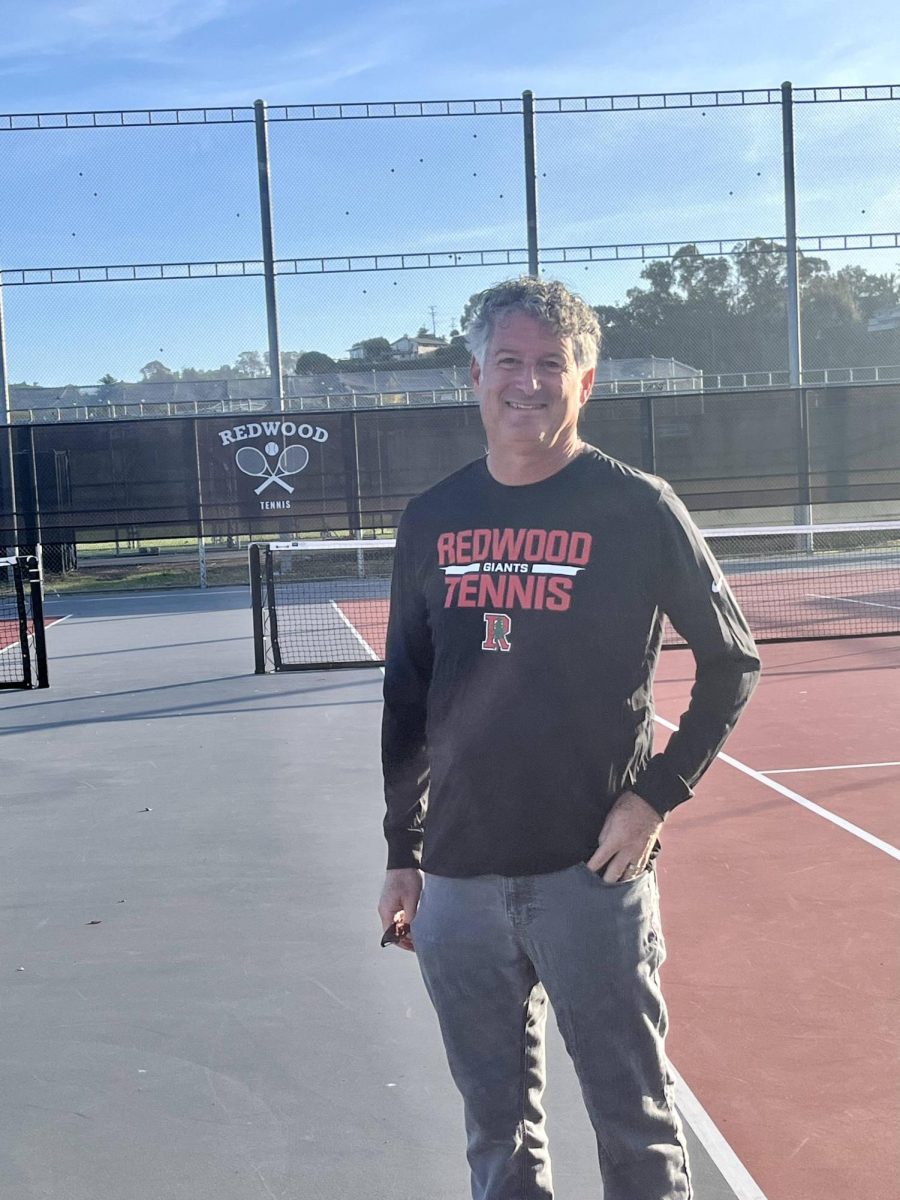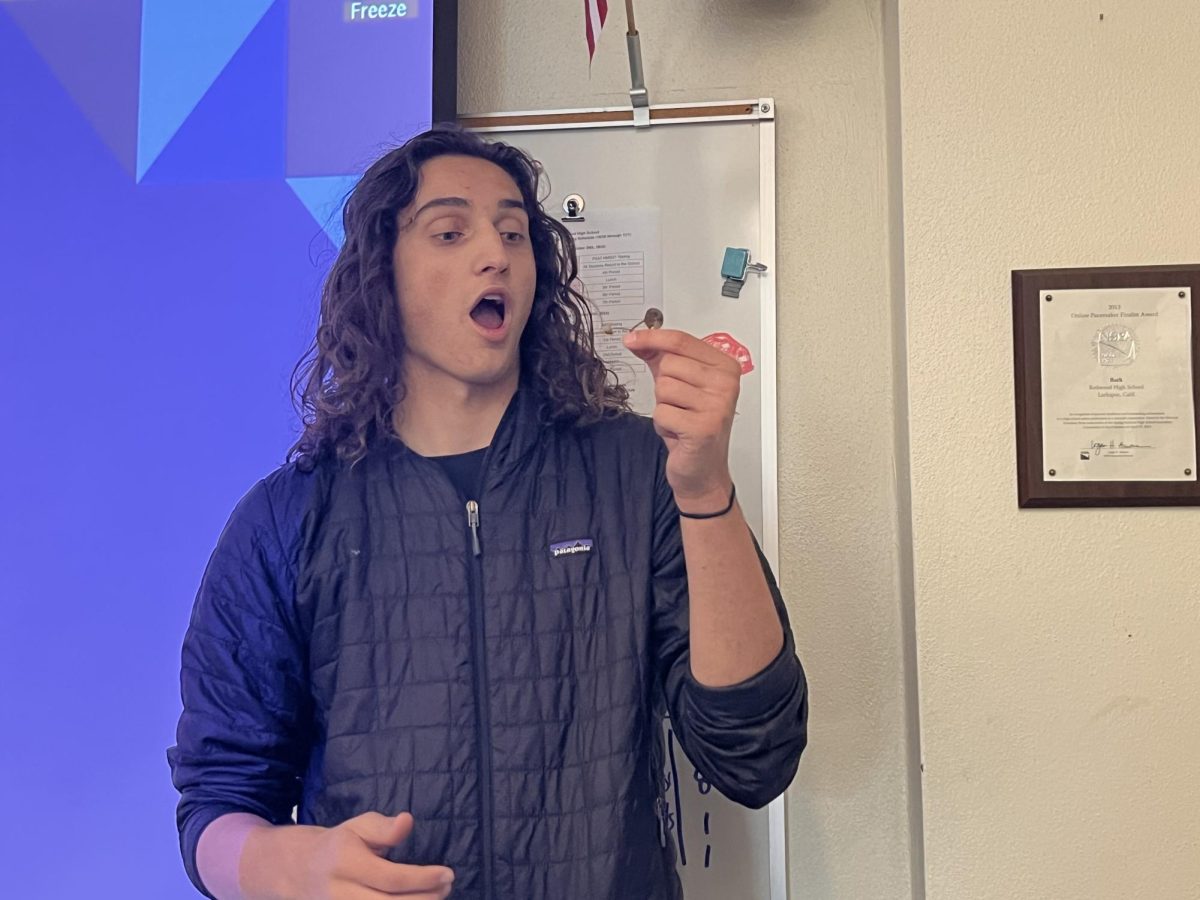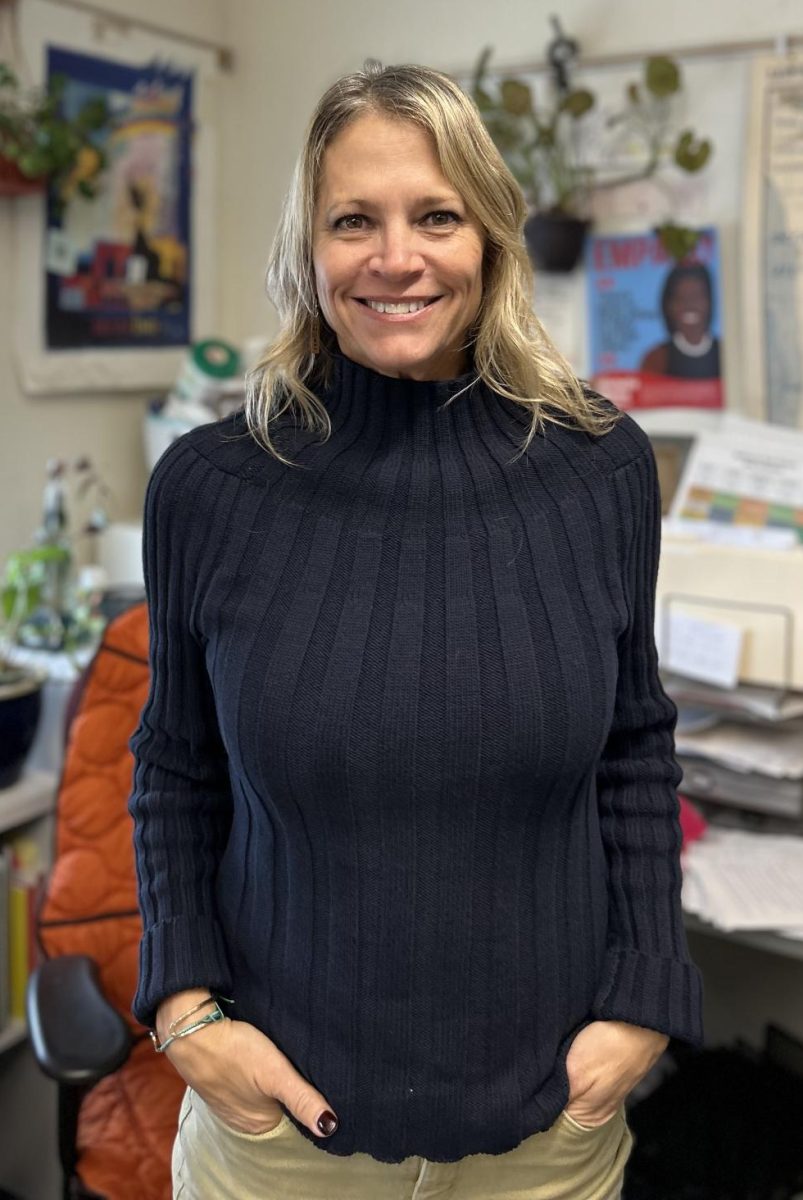She stood up on the stage waiting to show what she had worked on for 15 years. She had one minute to show the judges she was worth it. It was all muscle memory at that moment.
Senior Julia Halloran started dancing at three years old, inspired by her family’s Irish heritage.
“I’m Irish, so all my cousins had been dancing. It was mainly my sister who is six years older. I would go and watch her practices. She was the drive for my inspiration,” Halloran said.
After her sister quit, Halloran convinced her mom to let her start dancing and Halloran quickly found a passion for the type of dance.
Halloran began her dancing career in San Francisco at the Healy Irish dance studio. She danced there from the time she was three years old to her freshman year and then transferred to Dillon Magh Adhair in Walnut Creek.
Halloran attends practice three times a week, but if they are coming up on regionals or on the world competition it can be anywhere from five to seven days a week with an hour commute both ways.

“My old school was closing their San Francisco location so they cut down lots of the classes they offered. A lot of my friends were leaving and I got scared that they weren’t going to offer the classes I needed to move up in levels and excel,” Halloran said.
Because of the uncertainty, Halloran made the decision to switch to a different location. According to Halloran, Dillon Magh Adhair is known around the world.
“I look back on it all the time and think if I made the right decision to leave or not. My friends who stayed at the school improved a lot and did really well in solos, but they didn’t end up getting the opportunities to go to worlds that I did and so I’m really glad that I left and went to the new school,” Halloran said.
At a younger age Halloran attended competitions every month or so because they didn’t have as many. On the East Coast, the competitions are more frequent because it’s more popular according to Halloran.
“Competitions are some of the most exciting things, but also the most terrifying,” Halloran said.
The competitions Halloran attended were held in St. Mary’s Cathedral, banquet halls, and hotels.
“By doing these smaller competitions at a young age I gained a valuable platform as I learned more dances and attended more competitions,” Halloran said.
At the age of 10, Halloran started attending regional competitions, which were much higher stakes than before.
“Regional competitions have people from all over the western region,” Halloran said. “Those are really intimidating especially when you are younger because you don’t know what to expect. There are so many older girls with much more experience.”
According to Halloran, there are team dances and solos. The solo dances are more structured, while for the team dances they can make up their own routine.
“In solos you get to show your own style and pizazz. In teams everyone needs to look uniform. You can’t have one person way better than everyone else. Everyone needs to look the same,” Halloran said.
Over the years, Halloran has been training to compete in competitions all over the world. In order to attend worlds one needs to qualify at regionals, which can be a tough process according to Halloran.
“It’s much more difficult to go for solos because there are much more people competing. The solo dancers go through three rounds to qualify. Teams are difficult too because it takes a certain person to work well in a team,” Halloran said.
For the past two years, Halloran has attended the world competitions in London and Montreal and claimed second place.
“Those were absolutely terrifying because it’s a week-long event and there are people all over the world competing,” Halloran said.
According to Halloran, it is intimidating because there are competitors from Africa, Australia, Ireland, England, Wales, Japan, Scotland and all over Europe.
“To go up on a world stage is intimidating because you have spent so many of the past years trying to qualify, choreographing all the dances and you have a minute to show all this work in one dance to five judges and you are competing against 100 other teams. You have that minute to show them that you are worth it with so much pressure built up in your head,” Halloran said.
It can be hard not to crack under the pressure, said Halloran. One year Halloran and her team were disqualified because one girl stepped the wrong way.
“Everything has to be exact. You can’t mess up the traditional dances from the book. In the instant we all saw her go the wrong way and we knew we were out of it,” Halloran said.
The traditional dances come from the Book of Kells. Other dances can be choreographed, making up the story with about 20 people. They are meant to tell a story, Halloran said.
While team dances aren’t as strict with the rules, they can sometimes be more difficult.
“It takes a certain person to work well in a team,” Halloran said.
In teams everyone wears the same dress and wig to make it look put together. According to Halloran, the attire is also a big part of the dance as well as an expensive part.
Solo dresses, depending on where they are purchased, can cost up to 3000 dollars. Many people purchase dresses in England and Ireland, the most prestigious places for dresses.
“Mine is black velvet and it has red and white embroidered going down the chest and the torso and the skirt has petal type things with red and white embroidery and I have my family crest on the back of it,” Halloran said.
In older years attire used to have designs from the Book of Kells that made sense to the Irish heritage. Now, a lot of times they are more plain with a splash of color along with gems and jewels.
“Some people for a while had pictures of Irish Saints embroidered on their skirts or were having folktales. They had a story board on the skirt. You just want to be able to catch the judges eye. That’s what a lot of it’s for,” Halloran said.
Once Halloran walks up on stage she knows what the judges look at instantly, her dress and wig.
“The second you walk on stage you want to be the one the judges look at not because you’re a hot mess, but because you have all the jewels and look presentable,” Halloran said.
Dresses differ from person to person and so do the wigs.
According to Halloran, some people wear a little bun wig that sits on top of their head and it’s more subtle. Halloran always wears a full wig that’s very curly.
“You used to just match the wig to your hair color, but now a lot of times people wear whatever color. A lot of people just spray the front of their hair to match it. For instance, I wear platinum blonde, so I spray the roots of my hair in front. And for teams my teacher says to wear black wigs, so I will spray the front of my hair black so none of my orginal hair color is showing,” Halloran said.
According to Halloran, the curly wig came about a long time ago.
“It’s curly because way back in the day, dance competitions in Ireland used to be on Sundays, and little girls would curl their hair to go to church so they would have curly hair to go to their competition. It became part of the look to wear a full wig,” Halloran said.
When Halloran is up on that stage she stands alongside 20 other girls who she has been dancing with since the beginning.
“The group of girls I dance with is like my family. I know some of the girls that I dance with better than I know my sister because you spend so much time with them. You just go through everything with them and have known them forever. They are part of my family,” Halloran said.
Halloran looks forward to seeing her team and is motivated by them on hard practice days.
“When it’s a really long practice day and you’ve been there for four hours already and another two to go you have to think about the wins that you had and how all this work does pay off. You just need to think about getting up on that world stage and getting second place,” Halloran said.
In the future Halloran still isn’t sure if she will bring her passion for Irish Dance to college, but she knows she will miss it.
“Because I’ve been doing it so long I want to experience some other things. If I go to school a little bit farther away I will practice and come back to to the regionals in the fall. I will go from there. I won’t be as involved in it though,” Halloran said.
Halloran is also still debating about becoming a dance teacher later on in life but it is difficult for Americans to be hired.
“If I wanted to do that I could, but there are multiple tests to take and you have to go in front of a panel and show that you know all the traditional dances by heart. They evaluate your teaching skills,” Halloran said.
Halloran is thinking about these possibilities, but will focus on college first.












